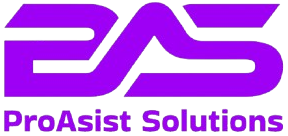Navigating the Data Flow: Cracking BRM Data Migration Roles
Business Rules Management (BRM) systems are critical for managing complex business logic, and migrating data into these systems is a specialized and crucial task. Landing a BRM Data Migration role requires a blend of technical expertise, data analysis skills, and a deep understanding of the BRM ecosystem. This blog will guide you through the process of cracking BRM Data Migration interviews.
Understanding the BRM Data Migration Landscape
BRM Data Migration roles typically involve:
- BRM System Knowledge: Understanding of the target BRM system (e.g., Oracle BRM), its data model, and its functionalities.
- Data Analysis and Profiling: Ability to analyze source data, identify data quality issues, and define transformation rules.
- ETL Processes: Experience with Extract, Transform, and Load (ETL) tools and processes.
- SQL and Database Skills: Proficiency in SQL for data querying and manipulation.
- Data Mapping and Transformation: Ability to define and implement data mapping and transformation logic.
- Testing and Validation: Experience with data migration testing and validation.
- BRM Configuration: Understanding of BRM configuration and customization.
- Understanding of Billing and Revenue concepts: in many cases, BRM is used for billing, so understanding of that domain is very useful.
Strategies to Ace Your BRM Data Migration Interview
Cracking BRM Data Migration interviews requires a strategic approach, focusing on both technical skills and domain knowledge. Here’s your roadmap:
1. Deep Dive into BRM Systems:
- Understand the Target BRM System: If the role specifies a particular BRM system (e.g., Oracle BRM), gain a thorough understanding of its architecture, data model, and functionalities.
- Study BRM Data Structures: Familiarize yourself with the key data structures and tables used in the BRM system.
- Learn BRM Configuration: Understand how to configure and customize the BRM system to meet specific business requirements.
2. Master Data Analysis and ETL:
- Develop Strong SQL Skills: Practice writing complex SQL queries for data analysis and manipulation.
- Learn ETL Tools: Gain experience with ETL tools like Informatica, DataStage, or Talend.
- Understand Data Profiling Techniques: Learn how to analyze source data to identify data quality issues and define transformation rules.
3. Excel in Data Mapping and Transformation:
- Practice Data Mapping: Practice defining data mapping rules between source and target systems.
- Learn Data Transformation Techniques: Understand various data transformation techniques, such as data cleansing, normalization, and enrichment.
- Understand Data Modelling: grasp the concept of data models, and how they apply to the migration process.
4. Focus on Testing and Validation:
- Understand Data Migration Testing: Learn about different data migration testing techniques, such as unit testing, integration testing, and user acceptance testing.
- Practice Data Validation: Practice validating migrated data to ensure accuracy and completeness.
- Learn Data reconciliation: understand how to compare data from source and target systems to verify that the migration was successful.
5. Build Domain Knowledge:
- Understand Billing and Revenue Concepts: If the BRM system is used for billing, gain a solid understanding of billing and revenue concepts.
- Learn Industry-Specific Data: Understand the specific data requirements of the industry in which the BRM system is used.
6. Build a Relevant Portfolio:
- Showcase Data Migration Projects: If possible, include data migration projects in your portfolio.
- Highlight ETL and SQL Skills: Emphasize your ETL and SQL skills in your resume and portfolio.
- Contribute to BRM Communities: Participate in online forums and communities related to BRM systems.
7. Ace the Interview Rounds:
- Technical Interviews: Expect questions on BRM systems, data analysis, ETL processes, SQL, and data migration testing.
- Coding Challenges: Be prepared for coding challenges that involve SQL queries or data transformation scripts.
- Data Mapping Exercises: You might be asked to define data mapping rules for a given scenario.
- Behavioural Interviews: Prepare using the STAR method to showcase your problem-solving skills, analytical abilities, and communication skills.
8. Tailor Your Approach:
- Research the Company and Role: Understand the company’s industry, the BRM system they use, and the specific requirements of the role.
- Highlight Relevant Experience: Emphasize projects and experiences that align with the company’s work.
9. Communicate Effectively:
- Explain Technical Concepts Clearly: Be able to explain complex technical concepts in a clear and concise manner.
- Demonstrate Analytical Skills: Showcase your ability to analyze data and solve problems.
- Ask Clarifying Questions: Don’t hesitate to ask for clarification if you’re unsure about a question.
Key Considerations for BRM Data Migration Roles
- Data Quality: Data quality is crucial for successful BRM data migrations.
- Data Security: Data security is paramount when migrating sensitive data.
- Performance Optimization: Data migration processes must be optimized for performance.
- Regulatory Compliance: Be aware of any regulatory compliance requirements related to data migration.
By mastering BRM systems, developing strong data analysis and ETL skills, building a relevant portfolio, and communicating effectively, you can confidently crack your BRM Data Migration interviews and contribute to the success of critical business systems. Good luck!
![Untitled design (1)[1]](https://proasistsolutions.com/wp-content/uploads/2021/04/Untitled-design-11-e1744036396309.png)



